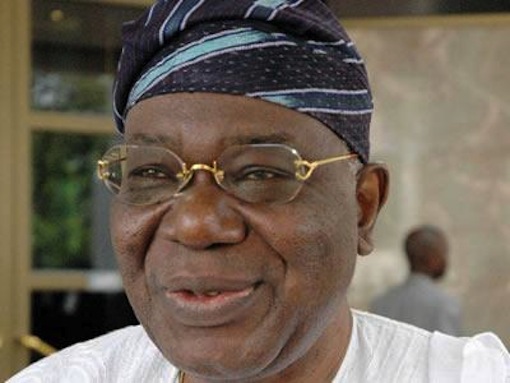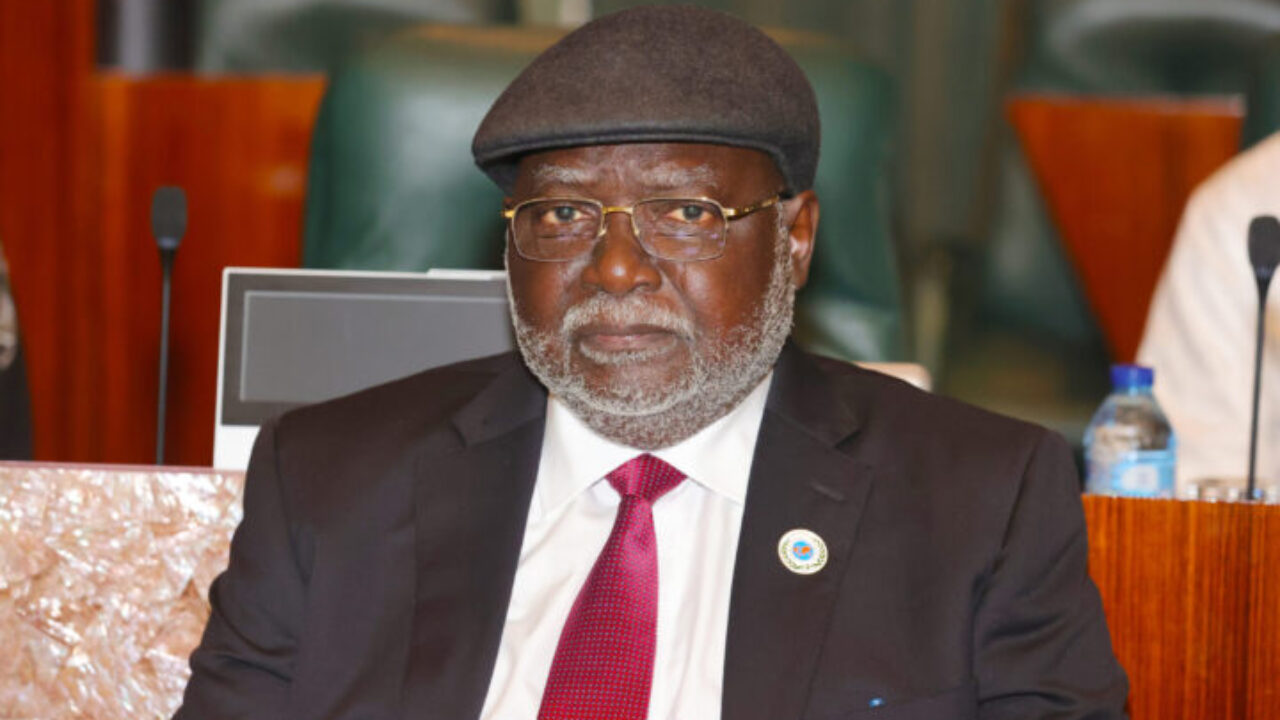Why prices of local rice continue to increase in spite of increase in domestic production
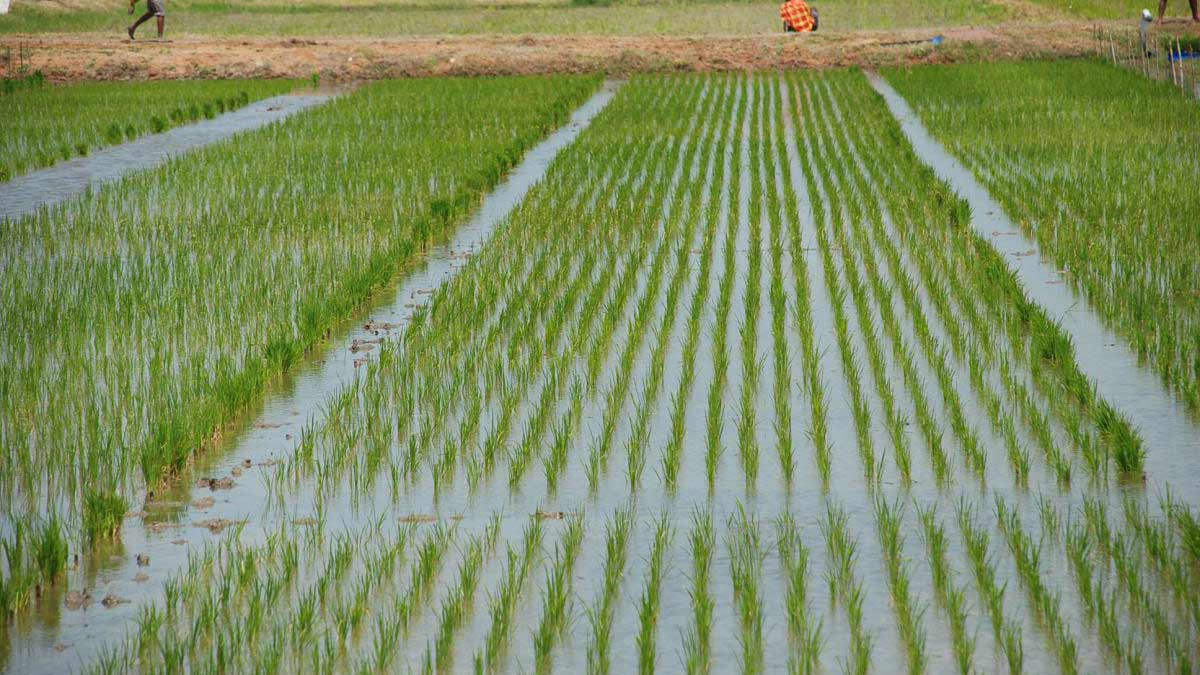
Daniel Adaji
The price of locally-produced rice has continued to increase in Nigeria despite the increasing volume of rice production in the country. In 2017, it cost N16,000 on average to purchase 50kg of locally-produced rice. Due to multibillion Naira intervention by the Central Bank of Nigeria (CBN), under its Anchor Borrowers’ Scheme, the price dropped to N13,000 in 2019 but rose to N17,000 in 2018. Afterward, the price has continued to rise to N18,000, N20,000 and as of 2022, jumped to N28,000. Rice is a major staple for households in the country and is widely cultivated across the different agricultural zones in the country. Nigeria’s production of milled rice has been increasing since 2017, though it witnessed a decline in 2018 and 2019 respectively.
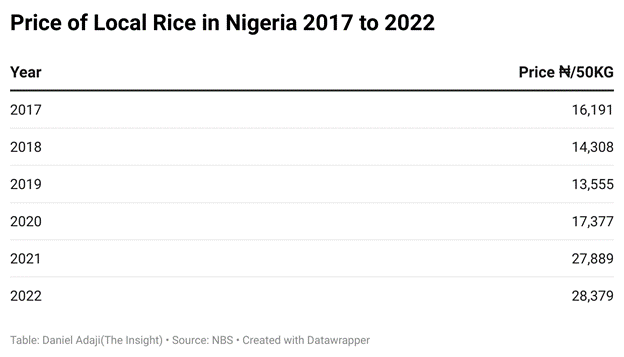
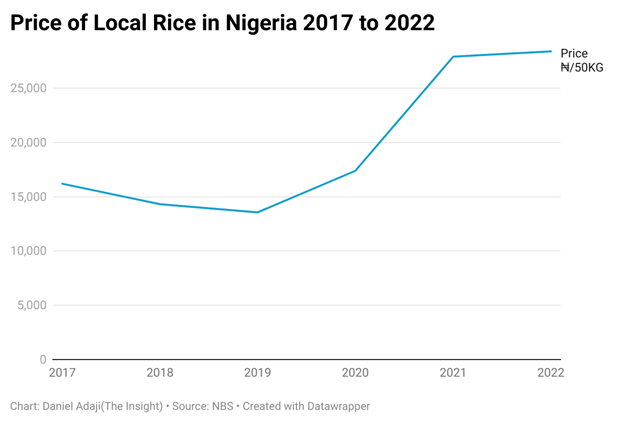
Flight Sergeant Rotimi Odunsi (retired), the President of Rice Union and Cooperative Society with membership in Ogun and Lagos states, in an interview with The Insight, blamed the constant increase in the price of local rice on several factors. According to him, “the cost of inputs; agrochemicals, seeds, and other work implements, is high. Also, diesel and other energy sources used in the production process are very expensive. The cost of labour has increased because even the cost of living in Nigeria is high.”
Rotimi added that unpredictable weather conditions and pest invasion, like the trailer birds, had badly affected many rice farmers’ yield, saying, “the lack of adequate water for irrigation and the current state of flood here in the southwest is submerging some of the up land rice on the field. This makes many farmers attempt to maximize the little harvest for maximum gain.”
When asked if farmers benefit from the price hike, he said “The middlemen buying from farmers are not making issue easier for farmers; the middlemen take from farmers at a lower rate and sell at an excessive price. The farmers get the little while they the middlemen get much.” Another reason for the high price of local rice, noted by Rotimi is the ‘Nigerian mentality.’
“Our Nigeria mentality of pricing is that if your price is low, people begin to think what you are selling is not of good quality, even when you process it into the highest grade. Definitely, the farmer would want his rice to be rated high by increasing the price, too.”
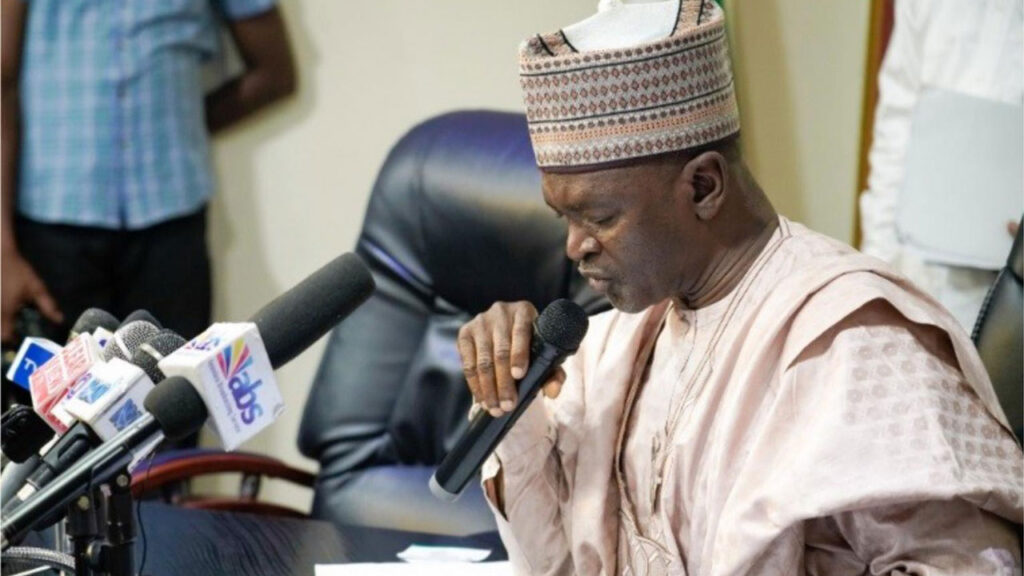
Nigeria’s Minister for Agriculture, Dr. Mohammad Mahmood Abubakar
He, however, berated the government over multiple taxation and extortion in many states.
Mr. Akure Stephen, a rice farmer in Ogbomosho North Local Government of Oyo state, has been farming for over two decades. He said, “rice production has been increasing in the country, but the cost of buying inputs like chemicals used as herbicides and pesticides is high that is why the price of the commodity has been on the increase.”
Also, Nassarawa state-based farmer, Mr. Emmanuel Usman, said there are several reasons why the price of Nigerian rice had been increasing despite increased supply. He said “the Nigerian population is increasing and the demand for the rice we produce here in the country is increasing. Although the level of production is high in some parts of the country, the demand is still high because rice importation has been reduced. Also, Nigerians are beginning to have confidence in eating home-grown products, especially the local rice, because, from the address on the rice bags, the origin is known unlike the ‘chemically packaged’ rice called foreign rice’ which is re-polished, re-branded, and repackaged and instead of nourishing it leads to sicknesses among consumers .”
There is a need for the government to regulate the price of the commodity.
Asked whether farmers benefit from the price increase, Mr. Emmanuel said “rice farmer’s welfare has increased but the system has a way of siphoning the benefits from farmers. For instance, the prices of the chemicals we used to buy for our farms have increased by more than 100%.” He predicts that there may be a rice output shortage next year because many farms are downscaling in order to meet up with their expenditure within the available capital.
Between 2015 and 2022, the production of milled rice increased by 35%. In 2020, the production dropped to 4.8 million metric tonnes signifying -3.12% in growth when compared to the previous year. The reason for the decrease in the volume of production could be due to the COVID’19 pandemic.
Premium Times reported that Nigeria has produced more rice in the last five years than at any other time since the return of democracy in 1999, according to data from the United Nations Food and Agriculture Organization (FAO). According to the FAO data, between 2014 and 2016, Nigeria’s rice paddy production figures constantly rose from 6.0 to 6.2 and to 7.5 million metric tonnes respectively.
“In 2017, Nigeria’s production figure fell to 6.61 MMT but increased in 2018 to 6.81 million metric tonnes (MMT). Again, in 2019, it dropped to 5.1 MMT. When compared to government administrations in the last two decades, rice paddy production has so far averaged at about 7 MMT under the Buhari administration making it the highest. It averaged at 4.1mmt, 5.4mmt, and 3.3 MMT during the presidency of Musa Yar’Adua, Goodluck Jonathan, and Olusegun Obasanjo respectively. Rice paddy production in Nigeria increased from 325,000 tonnes in 1969 to 5.1 million metric tonnes in 2019, growing at an average annual rate of 8.76%”
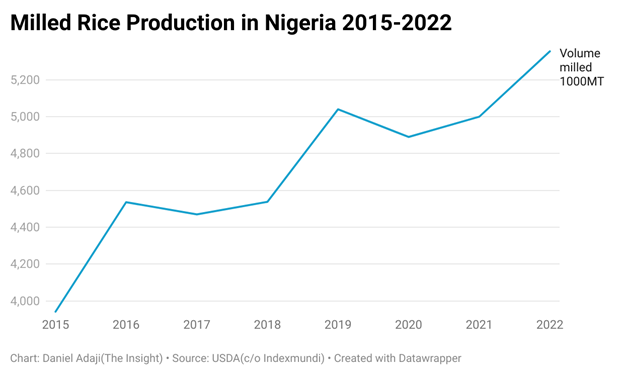
On the other hand, the volume of rice distributed in the country has been increasing since 2015, except for 2017 and 2019 respectively when a negative growth rate was recorded. Between 2015 and 2022, about 69.5 million metric tonnes of rice has been distributed in the country, resulting in an excess of 13.8 million over the domestic consumption which is put at 55.7 million metric tonnes in 2015 and 2022. Domestic consumption has been rising steadily since 2015 and outweighs the quantity milled in the country. The margin between the milled and the quantity consumed is put at 17.9 million metric tonnes to be covered by import, which has been relatively constant over the last three years while the milling rate has remained constant at 6.3 million metric tonnes since 2015.
Despite this high difference, data shows that Nigeria has enough rice that far outweighs the volume of her domestic consumption. This now leaves a question of why “the price of rice remained on a steady increase in the country”.
Nigeria has concluded plans to import 105,000 tonnes of potash, a fertilizer raw material, from Russia and Canada on June 3 and June 6 respectively.
The action by the government is to help prevent any shortfall in output from its fertilizer plants and apparently help boost food production.
The increasing inflation and exchange rate in the country leads to increased prices of inputs, most especially fertilizer, due to prices of raw material (importation) and high prices of rice processing equipment.
According to Reuters, this was made known by the Managing Director and Chief Executive Officer of Nigeria Sovereign Investment Authority (NSIA), Uche Orji, during a ministerial press briefing on Thursday, May 26, 2022, at State House, Abuja.
According to Bisi Ilebani, a Research Associate at AfricaRice, the lack of knowledge of good agronomic practices, inaccessibility to quality seeds, increased prices of inputs, and soil salinity/toxicity are factors responsible for the slow growth rate witnessed in the rice production in Nigeria.
According to him, “the increasing inflation and exchange rate in the country leads to increased prices of inputs, most especially fertilizer, due to prices of raw material (importation) and high prices of rice processing equipment. This further translates into the price hike witnessed in the cost of local rice in the country”.
Bisi added that there is a need for the government to regulate the price of the commodity. “In order for the government to regulate price, there should be a review of government policies to improve the rice sector, the introduction of government subsidy on rice production inputs and rice seed regulation.”
This report was produced under the Dataphyte Data and Development Reporting Fellowship 2022.
The Insight Report
Nigeria Coverage


